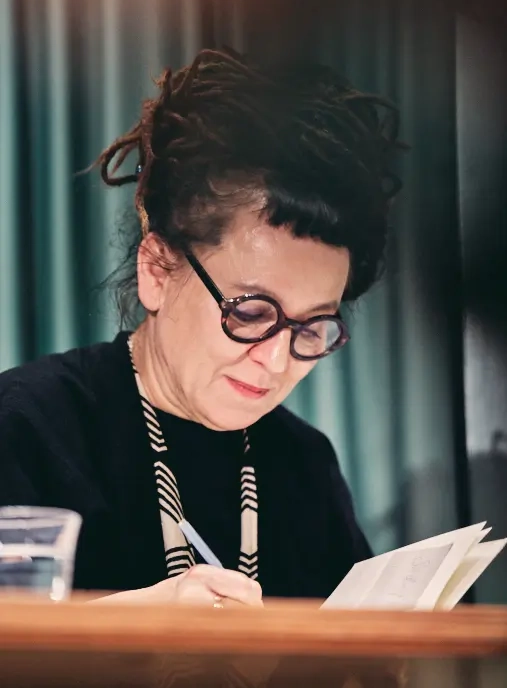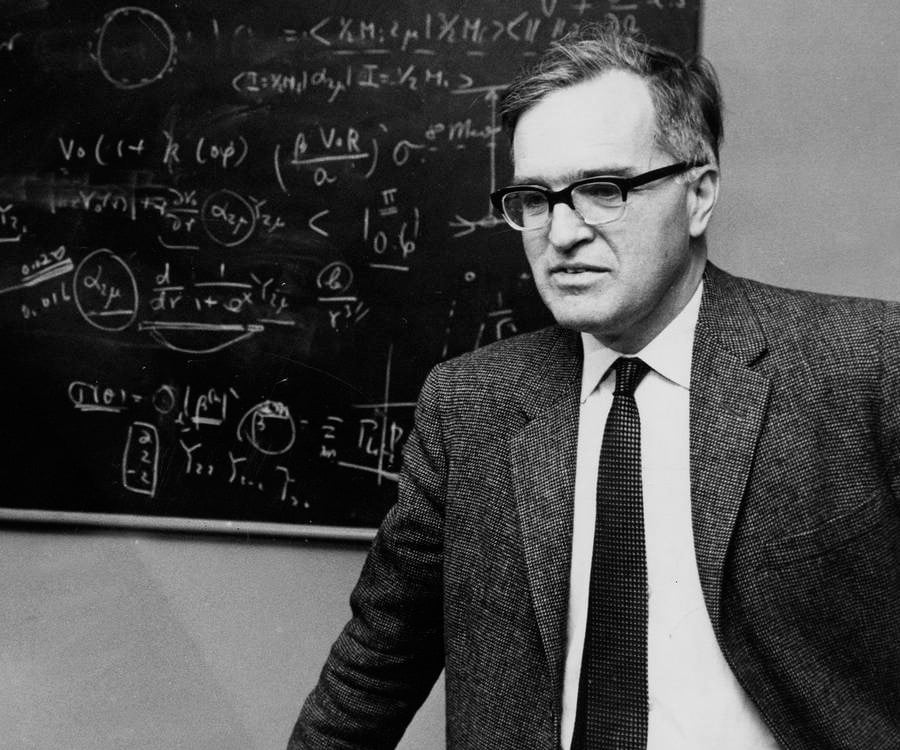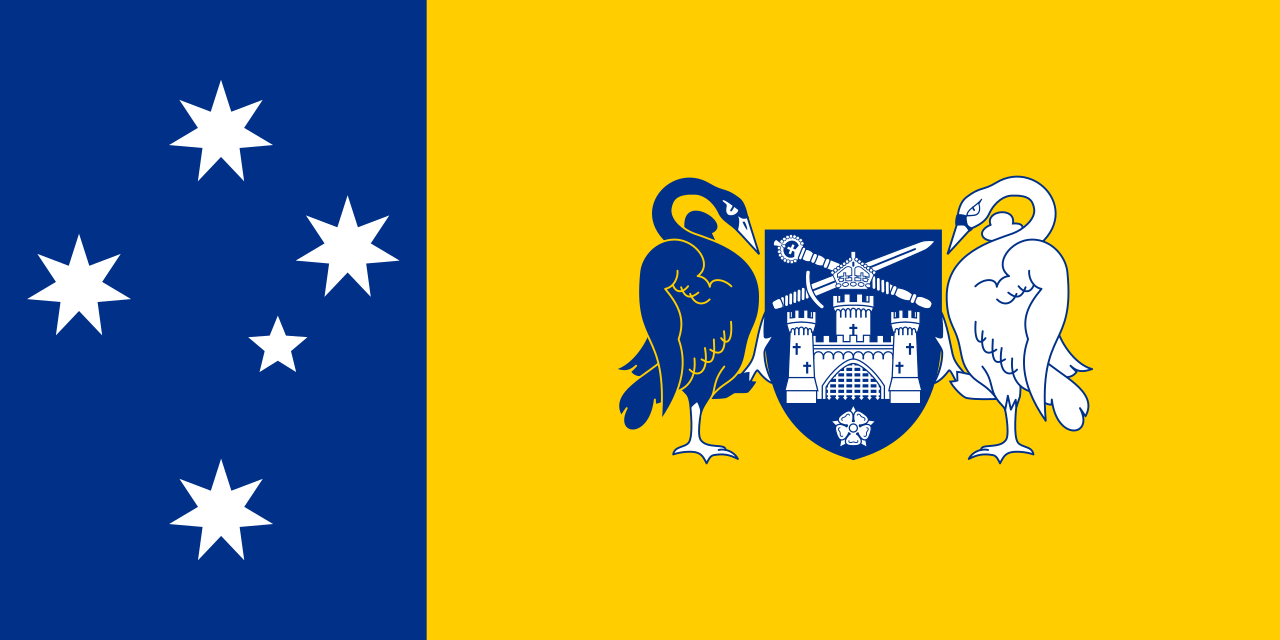
漢德百科全書 | 汉德百科全书
 Nobel prize
Nobel prize

Olga Nawoja Tokarczuk[1] [ɔlga tɔˈkart͡ʂuk] (* 29. Januar 1962 in Sulechów bei Zielona Góra, Polen) ist eine polnische Schriftstellerin und Psychologin. 2019 erhielt sie rückwirkend den Nobelpreis für Literatur des Jahres 2018, der zuvor nicht vergeben worden war.
奥尔加·纳沃雅·托卡尔丘克(波兰语:Olga Nawoja Tokarczuk[1],1962年1月29日—)是当代中最受人瞩目,也是最畅销的波兰作家之一[2][3] ,特别以神话、民间传说、史诗、与当代波兰生活景致风格著称。

 Colleges and Universities in Europe
Colleges and Universities in Europe
 Nobel prize
Nobel prize
 University/Institute
University/Institute
 Nobel prize
Nobel prize
 Nobel Prize in Chemistry
Nobel Prize in Chemistry


Oliver Eaton Williamson (* 27. September 1932 in Superior, Wisconsin) ist ein amerikanischer Wirtschaftswissenschaftler. Bekannt wurde er als Institutionenökonom, der sich vor allem mit der Transaktionskostenökonomie beschäftigt. Im Jahr 2009 wurde ihm gemeinsam mit Elinor Ostrom der Nobelpreis für Wirtschaft zuerkannt.[1]
 Nobel prize
Nobel prize
 Nobel prize
Nobel prize
 Nobel Prize in Chemistry
Nobel Prize in Chemistry
 Nobel prize
Nobel prize
 Nobel Peace Prize
Nobel Peace Prize
 Nobel prize
Nobel prize
 Nobel Prize in Physiology or Medicine
Nobel Prize in Physiology or Medicine
 Nobel prize
Nobel prize
 Nobel Memorial Prize in Economic Sciences
Nobel Memorial Prize in Economic Sciences
 Nobel prize
Nobel prize
 Nobel Prize in Physics
Nobel Prize in Physics
 Nobel prize
Nobel prize
 University/Institute
University/Institute



奥托·迪尔斯-德国化学家,1876年元月23日生于汉堡,1954年3月7日卒于基尔。他于1906年发现二氧化三碳,并发现甾族化合物的基本结构。1928年,迪尔斯和库尔特·阿尔德一道发现迪尔斯-阿尔德反应,两人因此在1950年获诺贝尔化学奖。

Otto Hahn (* 8. März 1879 in Frankfurt am Main; † 28. Juli 1968 in Göttingen) war ein deutscher Chemiker, Pionier der Radiochemie, Entdecker zahlreicher Isotope, heute Nuklide genannt (1905–1921), des radioaktiven Rückstoßes (1909), des Protactiniums (1917), der Kernisomerie beim „Uran Z“ (1921) und der Kernspaltung des Urans (1938), wofür ihm 1944 der Nobelpreis für Chemie verliehen wurde.
Er gilt allgemein als einer der bedeutendsten Chemiker der Geschichte und insbesondere als „Vater der Kernchemie“ – ein Begriff, der u. a. von Glenn T. Seaborg und amerikanischen Wissenschaftlern geprägt wurde.[1]
Von 1928 bis 1946 war Otto Hahn Direktor des Kaiser-Wilhelm-Instituts (KWI) für Chemie in Berlin, von 1946 bis 1948 der letzte Präsident der Kaiser-Wilhelm-Gesellschaft (KWG) sowie Gründer und von 1948 bis 1960 erster Präsident der aus der KWG hervorgegangenen Max-Planck-Gesellschaft zur Förderung der Wissenschaften. Seit den Atombombenabwürfen auf Hiroshima und Nagasaki 1945 gehörte er zu den schärfsten Kritikern der nuklearen Aufrüstung der Großmächte und der durch unkontrollierte Atomtests fortschreitenden radioaktiven Verseuchung der Erde. Dagegen setzte er sich wiederholt für die friedliche Nutzung der Kernenergie ein.[2] Otto Hahn wurde zudem einer der einflussreichsten Vorkämpfer für globale Völkerverständigung und internationale Entspannungspolitik, für seinen aktiven Pazifismus wurde er seit 1957 mehrfach für den Friedensnobelpreis vorgeschlagen.[3]
奥托·哈恩(德语:Otto Hahn,1879年3月8日—1968年7月28日),生于法兰克福逝于格丁根,德国放射化学家和物理学家,曾获1944年度诺贝尔化学奖(1945年颁发)。

奥格·尼尔斯·玻尔(丹麦语:Aage Niels Bohr,1922年6月19日—2009年9月9日),丹麦核物理学家,因“发现原子核中集体运动和粒子运动之间的联系,并且根据这种联系发展了有关原子核结构的理论”与本·莫特森及利奥·雷恩沃特共同荣获1975年诺贝尔物理学奖[1]。基于雷恩沃特提出的原子核的不规则形状液滴模型,玻尔与莫特森发展出一套与实验结果高度一致的详细理论。他与父亲尼尔斯·玻尔是四对同获诺贝尔物理学奖的父子之一。
Aage Niels Bohr (dän: [ˈɔːwə ˈne̝ls ˈpoɐ̯ˀ] (hören); 19. Juni 1922 - 8. September 2009) war ein dänischer Kernphysiker, der 1975 gemeinsam mit Ben Roy Mottelson und James Rainwater den Nobelpreis für Physik "für die Entdeckung des Zusammenhangs zwischen kollektiver Bewegung und Teilchenbewegung in Atomkernen und die Entwicklung der darauf basierenden Theorie der Struktur des Atomkerns" erhielt. Ausgehend von Rainwaters Konzept eines unregelmäßig geformten Flüssigkeitstropfens als Modell des Atomkerns entwickelten Bohr und Mottelson eine detaillierte Theorie, die in enger Übereinstimmung mit Experimenten stand.
Da sein Vater, Niels Bohr, den Preis 1922 erhalten hatte, sind er und sein Vater eines der sechs Paare von Vätern und Söhnen, die beide den Nobelpreis erhalten haben, und eines der vier Paare, die beide den Nobelpreis für Physik erhalten haben.

 Australian Capital Territory-ACT
Australian Capital Territory-ACT
 Australia
Australia
 Breakthrough Prize
Breakthrough Prize
 Fundamental Physics Breakthrough Prize
Fundamental Physics Breakthrough Prize
 Group of Eight
Group of Eight
 Nobel prize
Nobel prize
 Nobel Prize in Physiology or Medicine
Nobel Prize in Physiology or Medicine
 Nobel prize
Nobel prize
 Nobel Prize in Physics
Nobel Prize in Physics
 Nobel prize
Nobel prize
 Nobel Memorial Prize in Economic Sciences
Nobel Memorial Prize in Economic Sciences
 Nobel prize
Nobel prize
 University/Institute
University/Institute
 Sinology
Sinology


 Chancellerie des universités de Paris
Chancellerie des universités de Paris
 France
France

 Ile-de-France
Ile-de-France
 Nobel prize
Nobel prize
 Nobel Prize in Chemistry
Nobel Prize in Chemistry
 Nobel prize
Nobel prize
 Nobel Peace Prize
Nobel Peace Prize
 Nobel prize
Nobel prize
 Nobel Prize in Literature
Nobel Prize in Literature
 Nobel prize
Nobel prize
 Nobel Prize in Physics
Nobel Prize in Physics
 Nobel prize
Nobel prize
 Nobel Prize in Physiology or Medicine
Nobel Prize in Physiology or Medicine
 Nobel prize
Nobel prize
 Nobel Memorial Prize in Economic Sciences
Nobel Memorial Prize in Economic Sciences
 Nobel prize
Nobel prize
 University/Institute
University/Institute
 Sinology
Sinology


The University of Paris (French: Université de Paris), metonymically known as the Sorbonne (French: [sɔʁbɔn], one of its buildings), was a university in Paris, France, from around 1150 to 1793, and from 1806 to 1970.
パリ大学(仏:Université de Paris)は、かつてフランス共和国のパリに存在した大学。1970年に、パリ、クレテイユおよびヴェルサイユの3大学区にある13の大学に分割された[1]。これらの大学では、多くのノーベル賞受賞者を送り出している他、法学、政治学、科学、物理学、神学などの分野で優秀な学者を輩出している。また芸術の教育機関としても名高い。
Emerging around 1150 as a corporation associated with the cathedral school of Notre Dame de Paris, it was considered the second-oldest university in Europe.[1] Officially chartered in 1200 by King Philip II (Philippe-Auguste) of France and recognised in 1215 by Pope Innocent III, it was later often nicknamed after its theological College of Sorbonne founded by Robert de Sorbon and chartered by French King Saint Louis around 1257.[citation needed]
Internationally highly reputed for its academic performance in the humanities ever since the Middle Ages – notably in theology and philosophy – it introduced several academic standards and traditions that have endured ever since and spread internationally, such as doctoral degrees and student nations. Vast numbers of popes, scientists, intellectuals and royalty were educated at the University of Paris. A few of the Colleges of the time are still visible close to Pantheon and Luxembourg Gardens : College des Bernardins (18, rue de Poissy 75005), Hotel de Cluny (6, Place Paul Painleve 75005), College Sainte Barbe (4, rue Valette 75005), College d'Harcourt (44 Boulevard Saint-Michel 75006), Cordeliers (21, Rue Ecole de Medecine 75006). [2]
In 1793, during the French Revolution period, the university was closed and by Item-27 of the Revolutionary Convention, the college endowments and buildings were sold.[3] A new University of France replaced it in 1806 with four independent faculties: the Faculty of Humanities ("Faculté des Lettres"), the Faculty of Law (later including Economics), the Faculty of Science, the Faculty of Medicine and the Faculty of Theology (closed in 1885).
In 1970, following the May 1968 events, the university was divided into 13 autonomous universities. Although all the thirteen universities that resulted of the original University of Paris split can be considered its inheritors, just three universities of the post-1968 universities inherited the name "Sorbonne", as well as its physical location in the Latin Quarter (i.e. Pantheon-Sorbonne University (Paris I); University of Paris III: Sorbonne Nouvelle; and Paris-Sorbonne University (Paris IV).[4][5][6][7]
From 2010, several of the University of Paris successors started to reorganise themselves into different groups of universities and institutions (COMUE), that, later, were upgraded to "pôles de recherche et d'enseignement supérieur". As a result, various university groups exist in the Paris area, among them Sorbonne Paris Cité, Sorbonne Universities, the University of Paris-Saclay, Paris Lumiéres, Paris-Seine, and so on.[8]
In January 2018, two of the inheritors of the old University of Paris, Paris-Sorbonne University and Pierre and Marie Curie University, merged into a single university called Sorbonne University.[9][10][11]
In 2019, two other inheritors of the University of Paris, namely Paris Diderot University and Paris Descartes University, are also expected to merge.[12]
L'Università di Parigi, conosciuta anche come la Sorbona, fu fondata nel 1170 circa. Fu riconosciuta dal Re Filippo II di Francia nel 1200 e dal papa Innocenzo III nel 1215 (in particolare, dal suo legato pontificio Roberto di Courçon). Soppressa nel 1793 all'indomani della Rivoluzione Francese, fu rifondata nel 1896.
Dal 1º gennaio 2018, con la fusione dei due atenei Paris-Sorbonne e Università Pierre e Marie Curie, è stata istituita un'unica università denominata Sorbonne Université[1][2]
La Universidad de París (en francés: Université de Paris), también conocida como La Sorbona, fue una de las universidades medievales más antiguas y más importantes. Fue fundada a mediados del siglo XII por el obispo de la ciudad y sus instalaciones se situaron cerca de la Catedral Notre Dame de París. En 1200 fue reconocida por el rey Felipe II y en 1215 por el papa Inocencio III. Adquirió rápidamente un gran prestigio, especialmente en filosofía y teología. Se constituyó como asociación de todos los colegios preexistentes en la ciudad de París situados a la orilla izquierda del río Sena (entre ellos La Sorbona, fundado en el año 1215 y con gran prestigio durante la Edad Media debido a su facultad de teología, cuyo nombre se asociaría posteriormente a toda la universidad). Su objetivo era formar a los funcionarios de la administración real (Consejo de Estado, parlamentos, tribunales, hacienda, etc.) y de instituciones eclesiásticas (profesores, médicos, bibliotecarios, obispos, abades, etc.).
Durante la Edad Moderna sufrió una situación de declive. En 1793 fue cerrada y sustituida por escuelas superiores especializadas en derecho, medicina, ingeniería, escuelas normales, etc. Un siglo más tarde, en 1896, se reabrió con cuatro facultades: Derecho, Medicina, Letras y Ciencias.
Tras los sucesos de mayo de 1968 y las reformas de 1968-1971 la universidad se dividió en trece universidades independientes, algunas de ellas multidisciplinares y otras especializadas en determinados ámbitos del conocimiento.
Парижский университет (фр. Université de Paris) — французский университет в Париже, один из старейших в мире; основан в середине XII века; будучи интернациональным образовательным учреждением, очень скоро заслужил европейскую репутацию. Его центром является здание Сорбонны в Латинском квартале на левом берегу Сены.
Как полудуховное общество магистров (преподавателей), подчинённое духовной власти, Парижский университет представлял полный контраст со светскими, республиканскими университетами североитальянских городов; в качестве основного образования (Studium generale) он был, главным образом, высшей школой богословия и свободных искусств, включал в свои программы юриспруденцию только в виде канонического права, а в медицине уступал первенство другим studia generalia.
Став величайшей школой всей Западной Европы, имея среди своих учеников и учителей представителей всех наций и величайших учёных средневековья — Фому Аквинского, Альберта Великого, Раймунда Луллия, Роджера Бэкона, Дунса Скота, Уильяма Оккама, — университет стал высшим авторитетом в вопросах веры и разума и во время падения папства, в эпоху великого раскола, в лице Д’Альи, Герсона и Клеманжи был руководителем католической церкви и сделал попытку реформировать её во главе и членах.
После майских событий 1968 года был преобразован в 1970 году в 13 парижских независимых университетов.
 Literature
Literature
 Science and technology
Science and technology

 History
History